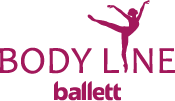Ballet and Creative Childen’s Dance
Sima Bürgin’s instruction follows the Vaganova method, which is employed in every well-known dance academy around the world. The methodical progression of the lessons promotes the coordination of sequences of movement, posture and musicality, which is reflected in the aesthetic beauty of classical dance.
“All dance styles have one thing in common: they train children in a multitude of ways and make use of their natural urge to move. That’s a highly valuable commodity in times characterized by an increasing lack of exercise.” (Statement by Dr. Liane Simmel, specialist in dance and sports medicine)

Fusspuren X – Zurich Opera House 2014 (Foto: © Bettina Stöss)
Pre-Ballet
As the word pre-ballet indicates, this is a preliminary stage of classical ballet. It incorporates the idea of bringing children as young as four years old into contact with classical dance. Since children at that age are very open, perceptive, and eager to learn, it is important to take advantage of this developmental stage to teach them the correct know-how for dance techniques. Early, correct training gives them a strong foundation and optimal preparation for a future education in ballet or any other physical activity.
Pre-Ballet and Classical Ballet
Pre-ballet and, later on, classical ballet, require a clearly structured physical training and teach the highest form of body control, thus serving as a starting point for all subsequent training systems. The reason for this is that classical dance technique creates the optimal conditions for positioning and centering the body, so that it is able to move freely, lightly, and naturally as a highly trained instrument. The dancer requires only a minimum of tension thanks to the trained posture, optimal body position and centering. Movements become efficient and ergonomic, and any artistry on the part of the dancer – whether jump or turn – appears smooth, harmonic, and expressive in spite of the high degree of physical exertion. Learning classical ballet is all about a perfect training of the instrument, which in this case is the dancer’s own body. Only an instrument that is in tune can play a variety of music in harmonious tones, expressing itself freely both within a defined form and through improvisation. The dancer carries out movements with their own body as the instrument, filling it with life and emotion. At the same time, musicality and a sense of rhythm are trained, which are prerequisites for any technique.
Pre-ballet and classical ballet thus serve as a type of life training, as Shinichi Suzuki describes it in “Nurtured by Love”, which can be applied to all other areas of life.
Personal Development
Through dance, children learn an attitude toward life which makes it possible for them to sincerely and earnestly engage in something they enjoy. This requires a great deal of time, patience, endurance and hard work on the part of the children, which they need to invest in their weekly training sessions. It’s all about developing their personality and bringing out the most of their unique potential.
My task as a dance instructor is to support each individual child in their personal evolution and development by continually encouraging them to believe in their own abilities, which manifest as their personal talent. The dance technique should meld with the child’s personal mode of expression until dancing becomes their second nature.
In closing, I would like to quote Shinichi Suzuki, whom I often mention in the course of my work: “Children in their simplicity seek what is true, what is good, what is beautiful, based on love.”

